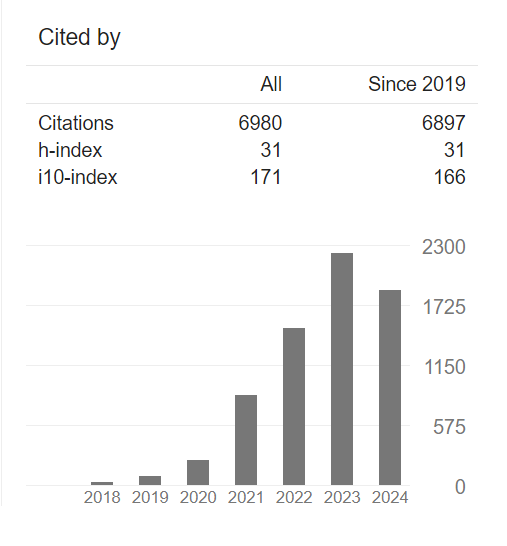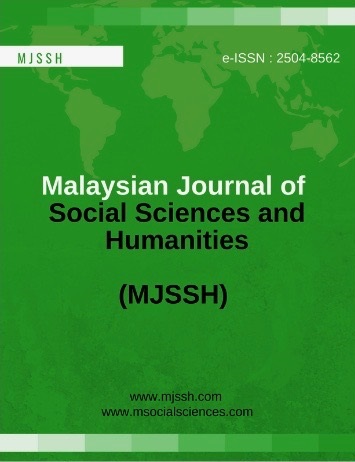Thematic Systematic Review of Live Streaming Recruitment: Benefits, Challenges, and Governance Recommendations
Abstract
Live streaming recruiting, as an innovative 'cloud-based' strategy, has swiftly gained traction owing to its cost-effectiveness, high efficiency, and immersive interactivity. Nonetheless, it encounters obstacles such as information distortion, absence of standards, and platform governance challenges. Adhering to the PRISMA guidelines, this study meticulously collected 18 journal articles and conference reports published between 2020 and 2025, and employed thematic analysis to examine the data, thereby obtaining substantiating evidence. The advantages are categorised under eight themes: spatial and temporal advancements, cost efficiency, immersive engagement, accurate matching, job creation for targeted demographics, holistic enhancement of the efficacy of state employment services, facilitation of interregional labour mobility and promotion of regional economic development, and digitisation of recruitment procedures coupled with industrial upgrading. The disadvantages are categorised into nine themes: information distortion, lack of standardisation, inadequate content preparation, limited interactive feedback, data security threats, cultural incongruence, pressure to conform to public opinion, technology deficiencies, and concealed costs. The research indicates that creating a cohesive management structure, advancing the professionalisation of 'live streaming recruiters,' and instituting credit rating and blacklist systems are essential for addressing the 'efficiency-trust' dilemma. The report finds that governments, platforms, and institutions must work to elevate live streaming recruiting from a mere 'traffic instrument' to a 'high-quality employment infrastructure'.
Downloads
References
Bramer, W. M., Giustini, D., De Jonge, G. B., Holland, L., & Bekhuis, T. (2016). De-duplication of database search results for systematic reviews in EndNote. Journal of the Medical Library Association: JMLA, 104(3), 240.https://doi.org/10.3163/1536-5050.104.3.014
Chen, H. (2024). Research on the paths of network live-streaming technology promoting employment. China Venture Capital, 25, 72–75.https://doi.org/10.12433/zgkjtz.20242523
Chen, M. X. (2024). Study on the influencing factors of college students' usage intention of live-streaming recruitment platforms. Public Relations World, 9, 15-17. https://doi.org/10.3969/j.issn.1005-3239.2024.09.006
China Industry Research Institute. (2024, March 28). The scale of live-streaming users in China reached 816 million in 2023, accounting for 74.7% of total internet users. AskCI. https://www.askci.com/news/chanye/20240328/085503271158730331233150.shtml
China Internet Network Information Center (CNNIC). (2024, April 3). The 53rd statistical report on China's internet development. NetEase. https://www.163.com/dy/article/IURKHF2B05346KF7.html
China National Radio. (2024, December 24). Live-streaming job fairs open new employment channels: Nearly 180,000 people found jobs through Douyin's public welfare live broadcasts in 2 years. Tencent. https://news.qq.com/rain/a/20241224A0649Z00
Chinese Academy of Labor and Social Security. (2024, December 28). Report of the Chinese Academy of Labor and Social Security shows: Job hunting in live streaming rooms is becoming the norm. Workers' Daily. https://www.workercn.cn/c/2024-12-28/8424749.shtml
Ge, L. J. (2025). Building the "happy employment linyi" live-streaming recruitment service brand: innovating and empowering a new model for high-quality and sufficient employment services. Shandong Human Resources and Social Security, (Z1), 52–53. https://www.cnki.com.cn/Article/CJFDTotal-SLDB2025Z1026.htm
General Office of the Ministry of Human Resources and Social Security of the People's Republic of China. (2023, December 28). Notice on promoting the application of live streaming job recruitment in the field of public employment services. The Central People's Government of the People's Republic of China. https://www.gov.cn/zhengce/zhengceku/202401/content_6925315.htm
Gu, Y. Q., Jin, P., & Pan, J. F. (2025). How does Wuxi "Wuxi cloud recruitment" make employment accessible on screen? China Employment, 4, 26–27. https://doi.org/10.16622/j.cnki.11-3709/d.2025.04.012
Gusenbauer, M., & Haddaway, N. R. (2020). Which academic search systems are suitable for systematic reviews or meta‐analyses? Evaluating retrieval qualities of Google Scholar, PubMed, and 26 other resources. Research synthesis methods, 11(2), 181-217.https://doi.org/10.1002/jrsm.1378
Hao, Y. N. (2023). New exploration of party media serving people's livelihood: Xuchang Daily's live-streaming recruitment builds a new bridge for employment and recruitment. China Prefecture and Town Newspaperman, 9, 92–93. https://doi.org/10.16763/j.cnki.1007-4643.2023.09.002
Huang, X. M. (2025). Promoting the high-quality development of live-streaming recruitment in the field of public employment services. Human Resource Services, 5, 54–59.https://doi.org/10.3969/j.issn.2097-146X.2025.5.rlzyfw202505018.
Jiang, Y. Y. (2022). Live-stream job recruitment makes hiring within reach. Human Resources, 15, 24–26.https://doi.org/10.3969/j.issn.1672-1632.2022.15.006
Jin, C. (2024). Live streaming recruitment: The 'blue ocean' of digital recruitment for blue-collar workers. Human Resources, 1, 116–117.https://doi.org/10.3969/j.issn.1672-1632.2024.01.051
Jin, R. X. (2023). Chengdu Jinniu District: "night market + live-streaming recruitment" promotes flexible employment. Sichuan Labour and Social Security, 7, 79.https://d.wanfangdata.com.cn/periodical/scldbz202509032
Lei, J., & Xia, F. S. (2024). Live-streaming recruitment based on IPA analysis method. Human Resources, 20, 149–151.https://doi.org/10.3969/j.issn.1672-1632.2024.20.069.
Lei, X. (2023). Kuaishou promotes high-quality employment through live-streaming recruitment. China Quality Miles, 8, 78–79.https://doi.org/10.3969/j.issn.1005-149X.2023.08.040.
Luan, X. Y. (2022, August 15). Live-streaming job fairs should have more expectations in the "cloud". People's Daily. https://doi.org/10.28655/n.cnki.nrmrb.2022.008795
Lv, J. T. (2023). What new trends are there in blue-collar employment? "live-streaming recruitment" becomes a new job-seeking channel. China Economic Weekly, (Z1), 96–97. https://doi.org/10.3969/j.issn.1672-7150.2023.01.031.
Ministry of Human Resources and Social Security of the People's Republic of China. (2022, March 28). Notice on strengthening enterprise recruitment and employment services. The Central People's Government of the People's Republic of China. https://www.gov.cn/zhengce/zhengceku/2022-04/13/content_5684965.htm
Moher, D., Liberati, A., Tetzlaff, J., & Altman, D. G. (2009). Preferred reporting items for systematic reviews and meta-analyses: the PRISMA statement. Bmj, 339.https://doi.org/10.1136/bmj.b2535
National Development and Reform Commission of the People's Republic of China. (2022, December 28). China blue-collar employment research report released: Live-stream recruitment becomes a new job-seeking channel. https://www.ndrc.gov.cn/fggz/jyysr/jysrsbxf/202212/t20221228_1344359.html
Page, M. J., McKenzie, J. E., Bossuyt, P. M., Boutron, I., Hoffmann, T. C., Mulrow, C. D., ... & Moher, D. (2021). The PRISMA 2020 statement: an updated guideline for reporting systematic reviews. BMJ, 372. https://doi.org/10.1136/bmj.n71
Wang, M. H. (2024). Research on live-streaming recruitment empowering high-quality employment services. International Public Relations, 18, 20–22. https://doi.org/10.16645/j.cnki.cn11-5281/c.2024.18.016
Wang, P., Hu, S., Wen, B., & Lu, Z. (2024). “There is a job prepared for me here”: understanding how short video and live-streaming platforms empower ageing job seekers in China. In Proceedings of the 2024 CHI Conference on Human Factors in Computing Systems (pp. 1-14).https://doi.org/10.1145/3613904.3642959
Wang, Y. Q. (2023). Study on the sustainable development path of the "live-streaming recruitment" service model in the human resource market. China Economist, 3, 266–267.https://doi.org/10.3969/j.issn.1004-4914.2023.03.124
Wang, Y. T. (2024). Live-streaming recruitment: A new "Internet +" recruitment model. Human Resources, 1, 22–23.https://doi.org/10.3969/j.issn.1672-1632.2024.01.007
Xing, Y. S. (2024). Investigation and reflection on developing live-streaming recruitment into a powerful tool for promoting employment: A case study of Weihai, Shandong. China Human Resources and Social Security, 8, 25–26.https://doi.org/10.3969/j.issn.1674-9111.2024.08.014
Xu, H. (2023). Exploring the new employment ecosystem of live-streaming recruitment. China Social Security, 2, 80-81. https://doi.org/10.3969/j.issn.1008-4304.2023.02.039
Ying, X. (2025). Make "live-streaming recruitment" better serve the masses. China Employment, 5, 25. https://doi.org/10.16622/j.cnki.11-3709/d.2025.05.005

















